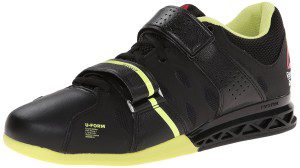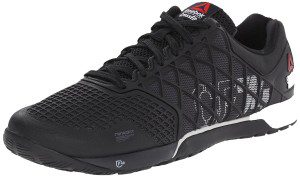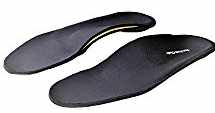Crossfit Foot Doctor in Seattle
As a podiatrist who both treats many CrossFit athletes and is a CrossFitter myself, I have spent a fair amount of time during my own workouts watching the foot position and shoes of other CrossFitters. Kind of an occupational hazard.
In this article I will discuss prevention and treatment of the most common foot and ankle injuries seen in CrossFit and then review the best shoes for CrossFit athletes.
If you are a CrossFitter with a foot or ankle injury, our primary goal when treating you is to allow the injured tissue to heal while getting you back to activity as fast as possible. If possible, we will allow you to continue to participate in CrossFit during healing, although you may have to modify your WODs.
Seattle CrossFit Foot and Ankle Injury Clinic
If you have experienced a foot or ankle injury that is preventing you from participating in CrossFit to your maximum, contact us for an appointment in our Seattle foot and ankle clinic. Please be sure to bring in any shoes you use during CrossFit so we can evaluate them.
CrossFit Foot and Ankle Injuries
Some of the most common injuries I treat in CrossFit patients include the following (use the links to learn more about each injury):
- Achilles tendonitis
- Peroneal tendonitis
- Metatarsal stress fractures
- Acute fractures (the most common acute fracture I see associated with CrossFit is a fracture of the 5th metatarsal bone).
- Plantar fasciitis
In addition, I often see compensatory injuries since CrossFit athletes have a tendency to push through their injuries. For example, knee pain that occurs due to a change in gait from a foot injury or pain in the other foot after a chronic injury on the opposite side.
Treatment of CrossFit Foot and Ankle Injuries
One of my primary goals when treating CrossFit athletes is to help them get back to full activity as quickly as possible. Most of the injuries can be treated conservatively and the majority of these injuries typically require some form of immobilization, rest and sometimes physical therapy. Surgery is almost never necessary and in fact we have built our practice on helping our patients avoid surgery. Surgery is only considered as a very last resort.
Proper shoes and the use of orthotic devices designed specifically to reduce stress on injured tissue can help patients return to CrossFit activities faster. We will provide recommendations on specific shoes and orthotic devices.
Physical therapy can be a critical factor to speed healing and return to activity. Active release technique (ART) and the Graston are techniques that we commonly prescribe. Other types of deep friction massage can also help. Use of home massage techniques such as foam roller or the use of “The Stick” are other techniques that we use on a regular basis in order to mobilize the muscle and fascia structures that have been injured or have played a role in the injury. Other techniques that can speed return to the CrossFit box include manual therapy and resistance exercises.
Maintaining Fitness While Recovering
As someone who can be a bit fanatical about my own exercise I realize helping CrossFit athletes maintain their fitness is a critical portion of recovery. We will help you design a fitness program that allows you to continue exercising while you are recovering. It is important to understand that injured tissue must be allowed to rest in order to heal, so there almost always must be some modification in exercise programs, but that doesn’t mean you need to stop exercising. We’ll work with you to develop a personalized plan and even help you do high intensity interval training while you recover. You can find more information on exercising with a foot or ankle injury here.
Best Shoes for CrossFit
I often see my CrossFit patients wearing shoes that are either inappropriate for the activity or shoes that are broken down.
Despite the fact that there are many shoes marketed as “CrossFit Shoes”, there is no one perfect shoe for CrossFit as the activities are just too varied. In fact, theoretically, you should have three types of shoes for CrossFit:
- One pair of shoes for lifting
- One pair for jumping
- One pair for cardiovascular fitness (running)
It is not practical, however, to expect participants to change shoes each time you move from, say, a box jump to a clean and jerk. So it is important to find a shoe that offers the best protection possible for all of these activities.
Of all of the activities done during CrossFit, weight-lifting is the most technically difficult and the activity that requires the best form in order to prevent injury. So it is my recommendation that CrossFit athletes focus on getting a very good pair of weight-lifting shoes that also will offer some protection for jumping and cardiovascular activities.
What Does Research Tell Us About CrossFit Weightlifting Shoes?
Weightlifting shoes (or “lifters”) are designed to protect the feet, provide stability and also give a firm stance. Lifters are usually made with at least one strap, which runs across the midfoot toward the instep. This strap helps to stabilize the foot during lifting. They also have a reinforced heel cup, which may be internal or external and they provide a very stable platform for the foot. Finally, weight lifting shoes should always have an elevated heel.
Heel Elevation in CrossFit Shoes – How Much?
There is a tendency within the CrossFit community to say that the “best” shoes have a “zero-drop” – meaning that the heel and forefoot are at the same level. While a zero-drop shoe may be beneficial for some CrossFitters, saying that it is the best for everyone is simplistic and not supported by the latest research.2-5 It depends on what kind of WODs you focus on (heavy lifting vs. metabolic conditioning), the mechanics of your feet, the tightness of your Achilles tendon and other muscle structures and more.
There is substantial evidence that using a shoe with a higher heel drop will reduce potential for injury if you are doing any heaving lifting at all.
Here are some of the benefits of an elevated heel if you are doing any heavy lifting:
- Decreased risk of back injury
A study by Kongsgaard and colleagues showed that having the foot in a position where the heel is higher than the forefoot helps increase activation of the quadriceps muscles that extend the knee3, 6. In turn this enables a weightlifter to be more powerful as they reach full extension through the lower extremity in lifts such as the power clean or snatch. In addition, other studies have shown that the increased heel height can decrease compression forces on the spine.4, 6
- Improved motion at the ankle joint by reducing tension on the Achilles tendon
A 2012 study showed that with an elevated heel we are able to more effectively dorsiflex at the ankle (foot pointed down), which allows us to bring our shins into a more vertical position. This allows us to sit into a squat easier and deeper, keep the chest up, the trunk straight and the spine in neutral position.4 Those trying these lifts in a zero drop shoe are much more likely to lift their heels and have poor form.
CrossFit Shoe Recommendation
It’s worth repeating that there is no one perfect shoe for CrossFit (or any activity). What works great for one person may be a terrible choice for another. A person with a very stable foot will often do well in a shoe that has a lot of flexibility. If a person who is a severe pronator (flat footed) used that shoe, however, they will put themselves at risk for overuse injuries including plantar fasciitis and knee problems.
There is a strong tendency in CrossFit to say that the “best” shoes are very flexible and have zero-drop. Again, this is a very simplistic approach and not supported by research. This type of shoe is fine for some people and some workouts but is not the right shoe for others. In fact, if you are someone who is prone to foot injuries it is likely that your foot is less stable than average and this type of shoe is not appropriate for you if you wish to avoid injury.
If you are going to make an appointment to see us, we will provide specific shoe recommendations based on your foot mechanics, foot shape and the types of WODs you do. Please be sure to bring your current shoes with you.
General CrossFit Shoe Recommendations
- If you are a fan of heavy-lifting WODs you will want to use more of a traditional lifter which has a greater heel to toe drop.
- If you tend to like metabolic conditioning WODs and do not do heavy lifting then you can use a shoe with a heel-to-toe drop that is close to zero.
- If you have a stable foot and do not have a short Achilles tendon a very flexible shoe will likely work fine.
- If you have a very pronated foot, a more supportive shoe will limit excessive pronation and protect against injuries to the knees and feet.
If I were to recommend one type of shoe for CrossFit I would recommend a hybrid that is basically a weightlifting shoe but has enough flexibility and cushion to be “WOD-able” (can be used for weight-lifting plus other portions of your WODs).
The products below are the ones we recommend to our patients and they are also affiliate links so we may receive a small commission at no additional cost to you if your order from the link.
Specific CrossFit Shoe Recommendations
This is one of my favorite all around shoes for CrossFit, particularly for those who like to lift. They are designed so that they give you the stability and heel elevation that you need for lifting but are flexible enough in the forefoot to allow you to use them for an entire WOD. These are versatile enough for you to go directly from a lift to double unders or a run. They are not the most stable shoes for weightlifting but they are good enough for most. A bonus is that the sole has a groove on the side that really helps with climbing a rope. This is currently my favorite CrossFit shoe. No shoe works great for everyone, but I do recommend giving this one a try and seeing how it feels.
A lightweight shoe with moderate support, this is the best all around CrossFit shoe I have found except for those who enjoy a lot of heavy lifting (for those people, see the Reebok Lifter Plus above). This is a very durable shoe that includes a kind of exoskeleton around the sides of the shoe that is lightweight but tough. This is very useful for rope climbs (which is where most CrossFit shoes break down). The shoes have a 4mm heel to toe drop which will help with doing lifts. Not as good of a shoe for heavy lifts as the Reebok Lifter, but not bad. The forefoot has a wide toebox which helps prevent excessive forefoot pressure. The sole has good cushion, but not so much as it becomes a problem for Olympic lifts. One issue to keep in mind is that they seem to fit about a half size small, so if you are ordering online size up one half size. If possible, buy them locally and have them fit to your feet. This is a very versatile shoe that will allow you to do all CrossFit activities.
CrossFit Orthotics
Custom Othotics for CrossFit
The purpose of any orthotic is to reduce stress on tissue that is prone to injury or is already injured. For example:
- If a patient is having trouble with plantar fasciitis the goal of an orthotic is to reduce tension on the plantar fascia by limiting arch collapse (when the arch collapses the foot lengthens and the plantar fascia gets tighter).
- If a patient is prone to metatarsal stress fractures, the orthotic is prescribed to reduce force through those specific metatarsal bones.
- If a patient is prone to runners knee or jumpers knee due to excessive foot pronation, the orthotic should function to limit that pronation and help keep the knee in proper alignment.
So the basic prescription for an orthotic for a CrossFitter is no different than an orthotic for any other activity and often an orthotic made for other shoes will work fine in a CrossFit shoe.
If I have a patient, however, who is very serious about CrossFit there are some special modifications we incorporate specifically for CrossFit. In particular I like to use an extremely lightweight orthotic and prescribe the orthotic so that it doesn’t disrupt the shape of the inside of the shoe. This is critical for activities such as a rope climb where you want close contact between the rope and the shoe.
PreFabricated Orthotics for CrossFit
A prefabricated orthotic for crossfit should be lightweight, provide good support and fit well into a majority of CrossFit shoes. The OTC orthotic I recommend the most for CrossFit is the FootChair Podiatrist Designed Adjustable Arch Orthotic.
FootChair has the best arch height we have found due to adjustable arch via pads that can be inserted under the cover. This is a very stable yet lightweight device that will not change the flexibility of the forefoot of the shoe
CrossFit Ankle and Foot Injuries in Seattle
I enjoy working with CrossFitters and helping them get back to full activity as quickly as possible. Don’t live with foot or ankle pain. Contact us today for an appointment.
References: CrossFit Foot Injuries and Shoes
- Beilke C, et.al. The effects of a Crossfit training program on sport performance and body composition in young healthy adults. J Undergrad Kenesiol Res.2012.
- Smith MM, et.al. CrossFit-based high-intensity power training improves maximal aerobic fitness and body composition. J Strength Cond Res. 2013.
- Kongsgaard M, et.al. Decline eccentric squats increases patellar tendon loading compared to standard eccentric squats.Clin Biomech. 2006.
- Sato K, Fortenbaugh D, Hydock DS. Kinematic changes using weightlifing shoes on barbell back squat.J Strength Conditioning Res. 2012.
- Bourget D, et.al. Influence of shoes increasing dorsiflexion and decreasing metatarsus flexion on lower limb muscular activity during fitness exercises, walking and running.JStrength Conditioning Res. 2008.
- Niehaus, S. Are Your Crossfit Patients Wearing Proper Weightlifting Shoes. Podiatry Today Blog, 2015
- Do I Have to Keep Wearing My Orthotics if My Feet Feel Better? - November 29, 2019
- Flip Flops and Sandals for Ball of Foot Pain | Podiatrist Recommended - August 5, 2018
- How To Strengthen the Arch of Foot - August 31, 2017




As someone who is a bit older, has high arches, and does a lot of HIIT training, I was hoping you’d be more specific with your recommendations based on sex and foot type. Most sites are pushing me toward running shoes, but I do a lot of lateral movements in my workouts, jumping, etc… so was considering an actual “tennis” shoe.
I was hoping to find answers here. 🙁
Tennis shoes are a very good solution for those doing a lot of side to side motion while HIIT training. We do have tennis shoes noted on our list.
I was born with club feet and had corrective surgery when I was born. I have custom made orthotics, but am having difficulty finding a shoe that lasts in the gym. I have lifters specifically for OLY based WODs, but I need something for the typical met-cons. My shoe prescriptions suggests a straight, neutral shoe (not pronated or supinated) with ankle support and a D width. Typically my shoes wear out on the heel to the outside of my foot. I need something with ankle support and a firm sole that won’t wear out after a month of exercising. I currently wear Jordan Basketball shoes. Any other suggestions?
Hi, Crossfitter with post traumatic ankle arthritis. I currently have multiple pairs of CF shoes from Reebok, Nike and Innov 8 lifters (which I love). Do you have any suggestions for metcon shoes that have cushion and ankle support?